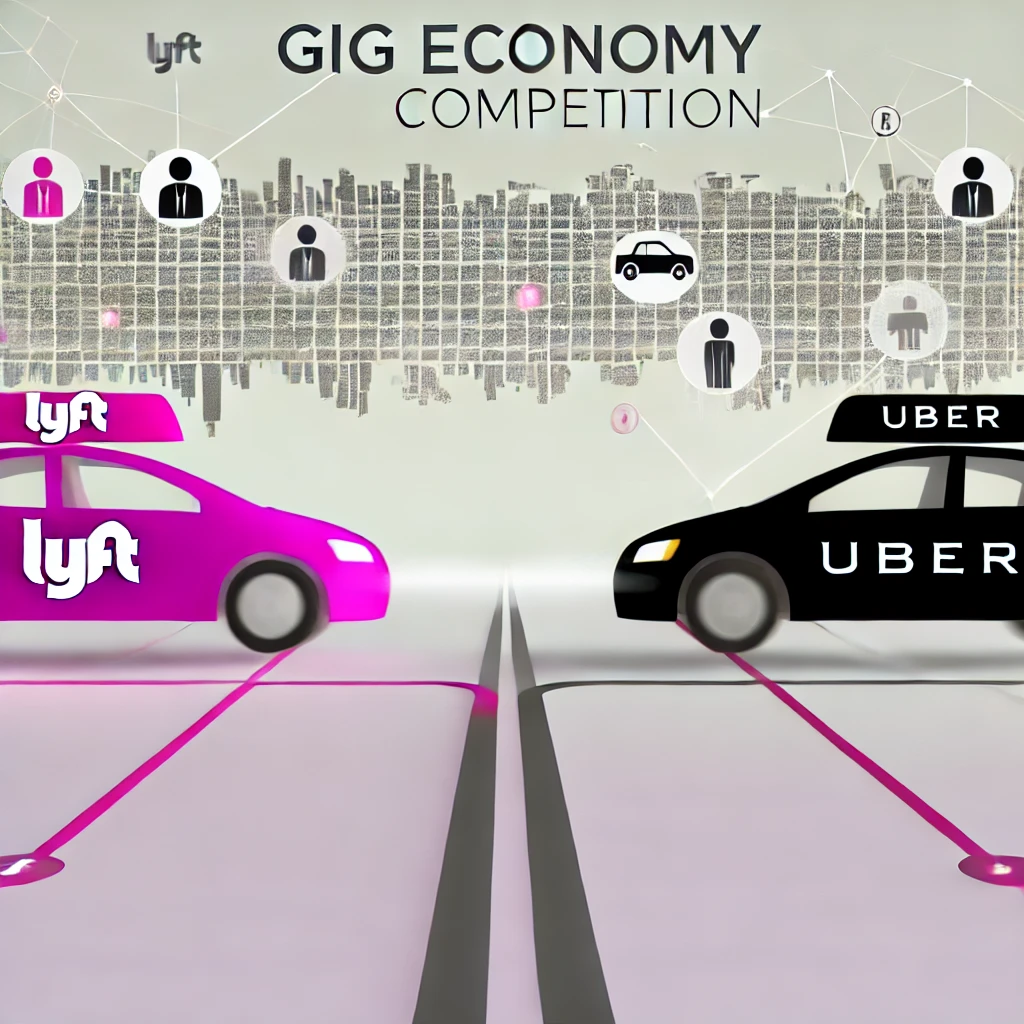In the world of ridesharing, Uber has long been the dominant force. But Lyft, once seen as the underdog, has managed to carve out a substantial share of the market. How did they do it?
By leveraging the gig economy in innovative ways that resonated with both drivers and riders. For startup founders, there are powerful lessons to be learned from Lyft’s journey.
Understanding the Gig Economy Advantage
Lyft’s success is intertwined with the gig economy—a labor market characterized by short-term contracts and freelance work. It’s flexible, scalable, and perfect for a startup looking to minimize overhead costs.
But simply being in the gig economy isn’t enough. You have to leverage it effectively.
1. Create a Unique Value Proposition
When Lyft entered the market, Uber was already well-established. Instead of competing on the same grounds, Lyft created a distinct identity: a friendlier, community-focused ridesharing experience.
Their drivers were “community drivers,” and the signature pink mustache symbolized a more personable service.
Takeaway: Find a unique angle in your market. Don’t try to outdo your competition at their own game. Differentiate your brand in a way that resonates with your target audience.
2. Empower Your Workforce
Lyft’s strategy centered around empowering its drivers, treating them as partners rather than just contractors. They introduced features like tipping and earnings transparency, which were not standard in the industry at the time.
This approach not only attracted drivers but also created loyalty.
Actionable Tip: Empower your gig workers with benefits and features that make them feel valued. Transparency, fair compensation, and recognition can foster loyalty and reduce churn.
3. Invest in Technology That Scales
Lyft invested heavily in technology to streamline its operations and improve the user experience.
They optimized their app for seamless interactions, integrated machine learning for dynamic pricing, and introduced features like Lyft Line (shared rides) to increase efficiency.
Actionable Tip: Leverage technology to scale your operations. Invest in features that enhance user experience and operational efficiency. Use data analytics to continuously refine your offerings.
4. Capitalize on Market Shifts
Lyft was quick to seize opportunities presented by market dynamics. When Uber faced backlash for its corporate culture, Lyft positioned itself as the ethical alternative.
They capitalized on the “#DeleteUber” movement, gaining both drivers and customers who were looking for a more ethical choice.
Takeaway: Always stay tuned to market sentiments. Be agile enough to pivot your strategy based on external factors. Position your startup as the preferable alternative when your competitors falter.
Actionable Strategies for Startup Founders
1. Build a Community, Not Just a Customer Base
Lyft emphasized community from the beginning. Their marketing campaigns featured drivers and passengers sharing stories, and the company encouraged a sense of camaraderie among users.
This community focus made Lyft feel more approachable than Uber, which was often seen as a faceless corporation.
How to Apply: Foster a community around your brand. Use storytelling, user-generated content, and events to create a sense of belonging. A strong community can be a powerful differentiator in competitive markets.
2. Innovate Beyond the Core Product
Lyft didn’t just offer rides. They introduced new services like shared rides, luxury options, and partnerships with healthcare providers for non-emergency medical transportation.
These innovations expanded their market reach and diversified revenue streams.
Actionable Tip: Constantly look for ways to innovate. Expand your product or service offerings to meet diverse needs within your market. Don’t be afraid to experiment and pivot based on user feedback.
3. Leverage Strategic Partnerships
Lyft leveraged partnerships to grow its business. They teamed up with General Motors to explore autonomous vehicles and collaborated with Google Maps to streamline the user experience.
These partnerships not only boosted credibility but also provided access to resources and expertise.
How to Apply: Identify potential partners who can complement your business. Collaborate to share resources, technology, and expertise. Partnerships can help you scale faster and tap into new customer segments.
4. Focus on Ethical Business Practices
Lyft differentiated itself by maintaining a strong ethical stance. This included fair treatment of drivers, environmental commitments, and community engagement. Their ethical positioning helped attract both customers and investors who valued corporate responsibility.
Actionable Tip: Ethics matter. Establish your brand as one that values fairness, transparency, and social responsibility. It will help build trust and loyalty among customers and employees alike.
Scaling Sustainably
Lyft’s growth story is one of sustainable scaling. They didn’t rush to dominate the market; instead, they focused on building a solid foundation. This approach allowed them to navigate challenges and adapt to changes in the competitive landscape.
Takeaway: Prioritize sustainable growth over rapid expansion. Ensure your business model is robust before scaling. This will help you withstand market fluctuations and build a resilient brand.
The Path Ahead
As Lyft continues to evolve, they’re exploring new avenues such as autonomous vehicles and multimodal transportation. For startup founders, the key lesson is to never stop innovating and adapting.
The market will change, but if you’ve built a flexible and resilient business, you’ll be ready to meet the future head-on.
Final Thought: Lyft’s journey offers a blueprint for startups aiming to compete with industry giants. Focus on differentiation, innovation, and ethical practices. Build a community, leverage technology, and seize opportunities as they arise.
With the right strategy, even the underdog can become a formidable contender.










